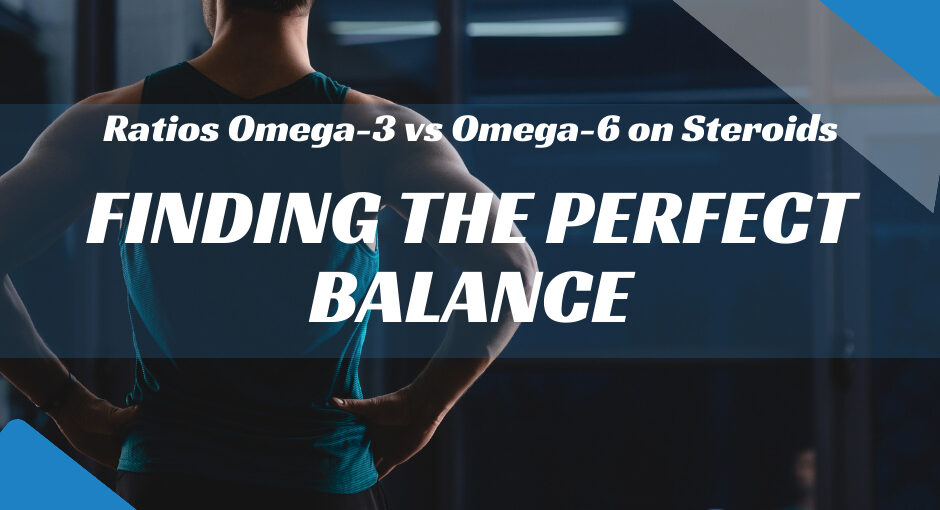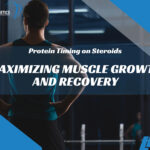Omega-6 Steroids: Why Fatty Acid Ratios Matter More Than You Think
Most athletes running steroid cycles focus on protein, carbs, and training volume. But one vital aspect of performance nutrition often gets overlooked — fatty acid balance, particularly between Omega-3 and Omega-6 fats. These essential fatty acids regulate inflammation, recovery, and even hormonal function. When you’re on anabolic steroids, maintaining the right Omega-3 to Omega-6 on steroids ratio becomes more than just a health tip — it’s a performance multiplier.
The truth is, while Omega-6 fatty acids are necessary for normal function, they can become problematic in excess. Steroids, by design, already elevate metabolic stress and inflammation. When that’s compounded by a diet overloaded with Omega-6s, you can experience worsened recovery, higher blood pressure, and impaired joint health. Striking the right balance through Omega-3 intake helps keep your system running like a fine-tuned machine.
At Bio Genetics USA, we emphasize that true enhancement goes beyond muscle gain. Managing your fatty acid ratios is about protecting longevity, performance, and internal balance—especially when using performance enhancers.
For deeper insight into how vitamins and minerals also play into this balance, check our guide on Micronutrients on Steroid Cycles.
The Science: Why Fatty Acid Ratios Matter
In performance nutrition, fats are often misunderstood. Many athletes still classify them as either “good” or “bad.” Still, in reality, fatty acids are dynamic signaling molecules that influence nearly every function in the body—from inflammation and hormone production to cell membrane structure and energy metabolism.
When running steroid cycles, understanding how these fats interact becomes crucial. Steroids intensify muscle metabolism and alter lipid balance, which means your fatty acid ratios directly impact not only your recovery and cardiovascular health but also the effectiveness and safety of your cycle.
Fatty Acids: The Unsung Regulators of Performance
Fatty acids are the building blocks of cell membranes and the precursors of many hormones and signaling compounds. Among them, Omega-3 and Omega-6 fatty acids stand out as essential fats, meaning the body cannot produce them naturally—they must come from your diet.
- Omega-3 fatty acids (EPA, DHA, ALA) are known for their anti-inflammatory properties and play a major role in cardiovascular health, brain function, and post-exercise recovery.
- Omega-6 fatty acids (linoleic acid, arachidonic acid) are pro-inflammatory, aiding immune function and tissue repair, but becoming harmful in excess.
Both are necessary, but they exist in a delicate biochemical tug-of-war. When balanced, they regulate inflammation, promote healing, and maintain hormonal equilibrium. When imbalanced—especially in the context of Omega-6 Steroids—they can accelerate oxidative stress, inflammation, and long-term health issues.
The Ideal Ratio: What Science and Evolution Tell Us
Humans evolved on diets with a near-perfect Omega-6 to Omega-3 ratio of 1:1 or 2:1. This equilibrium supported steady energy levels, efficient recovery, and minimal inflammation. But modern eating habits—loaded with processed foods, seed oils, and refined fats—have drastically shifted that balance.
Today, the average Western diet reflects an alarming 15:1 to 25:1 ratio, heavily tilted toward Omega-6. While this might not seem extreme, the consequences are profound—especially for athletes using steroids.
Steroids accelerate anabolic processes, meaning more oxygen use, faster metabolism, and greater production of free radicals. It creates a high oxidative load—and if your diet is high in Omega-6, that load turns into chronic inflammation, arterial stress, and reduced recovery potential.
Why the Imbalance Becomes Dangerous During Steroid Cycles
Athletes on steroids operate under a unique metabolic profile. The same compounds that increase strength and muscle mass can also strain the cardiovascular system, liver, and lipid metabolism. When dietary fats are out of balance, these risks multiply:
- Inflammatory Cascade Activation
Excess Omega-6s are converted into pro-inflammatory compounds called prostaglandins and leukotrienes. On steroids, where metabolism is heightened, this cascade accelerates. Chronic inflammation can lead to joint stiffness, poor recovery, and organ stress. - Arterial Stiffness and Lipid Profile Damage
Omega-6-rich diets contribute to stiffer blood vessels and reduced elasticity, increasing cardiovascular strain. Steroids already tend to lower HDL (“good” cholesterol) and raise LDL (“bad” cholesterol); adding more Omega-6 amplifies this imbalance. - Hormonal Interference
Both Omega-3 and Omega-6 influence hormone receptor sensitivity. When Omega-6 dominates, testosterone receptor efficiency may drop, limiting the anabolic potential of your steroid cycle. Omega-3s, in contrast, enhance receptor function and stabilize endocrine balance. - Oxidative Stress and Cellular Damage
Steroids boost cellular turnover and metabolic activity, which can increase oxidative stress. Without adequate Omega-3 intake, your antioxidant defenses weaken, leading to muscle fatigue, slower healing, and a greater risk of long-term cardiovascular issues.
The Result of an Imbalanced Fatty Acid Ratio
Excess Omega-6 Intake
- Heightens systemic inflammation and worsens fluid retention.
- Contributes to stiff arteries, high blood pressure, and poor lipid ratios.
- Increases joint pain and post-workout soreness due to inflammatory buildup.
- This process slows recovery and aggravates immune fatigue during long cycles.
Omega-3 Deficiency
- This condition reduces blood flow and oxygen delivery to working muscles.
- Limiting joint lubrication increases the risk of connective tissue strain.
- Weakens cognitive performance, causing mental fog and mood instability.
- Diminishes anabolic sensitivity, reducing the efficiency of your steroid stack.
Achieving the Perfect Ratio: The 3:1 Rule
For athletes using anabolic compounds, maintaining a ratio of approximately 2:1 to 4:1 (Omega-6 to Omega-3) provides the best physiological support. This ratio promotes:
- Faster recovery and reduced inflammation.
- Improved cardiovascular function and lipid balance.
- Enhanced cognitive clarity and emotional stability.
- Better muscle nutrient delivery and hormonal synergy.
In other words, when Omega-3 and Omega-6 are balanced correctly, your steroid-enhanced metabolism operates in harmony rather than opposition.
At Bio Genetics USA, we educate athletes to look beyond calories and macros—to understand the subtle chemical relationships that define success or burnout. Balancing these essential fatty acids is one of the simplest yet most powerful strategies for sustainable performance.
Why This Balance Defines Longevity in Enhancement
While steroids accelerate short-term muscle growth, longevity comes from managing internal equilibrium. Proper fatty acid ratios protect your heart, brain, liver, and hormonal systems, ensuring that your body doesn’t just look strong—it functions strong.
Whether you’re in a bulking phase demanding high caloric intake or cutting for definition, your Omega balance determines how well your body adapts to metabolic stress. It’s not about eliminating Omega-6—it’s about controlling it while elevating Omega-3 intake to restore harmony.
By mastering your Omega-3 to Omega-6 ratio, you’re not only optimizing performance—you’re investing in the sustainability of your health and results.
How Steroids Interact with Omega-3 and Omega-6 Fats
Steroids modify how the body handles lipids and inflammation. It creates a unique metabolic environment where fatty acid ratios can make or break results.
1. Steroids Increase Oxidative Load
Enhanced metabolism from anabolic compounds raises free radical production. Without sufficient Omega-3s (particularly EPA and DHA), the body can’t neutralize inflammation effectively.
2. Steroids Alter Lipid Profiles
Some steroids increase LDL (“bad cholesterol”) while decreasing HDL (“good cholesterol”). Omega-3s help restore cholesterol balance and protect arterial health, while excessive Omega-6s can worsen the imbalance.
3. Steroids Affect Cell Membranes
Muscle cells adapt rapidly to steroids. The fluidity of those membranes—important for nutrient absorption and hormone signaling—depends on Omega-3 intake. Without enough Omega-3, the cells become rigid, impairing growth efficiency.
4. Steroids Intensify Inflammatory Pathways
While inflammation aids growth, chronic inflammation slows healing and stresses organs. Omega-3s help modulate the COX and LOX enzyme pathways, reducing unnecessary inflammatory responses.
Finding the Perfect Balance: Omega-3 vs. Omega-6
Balancing these fats doesn’t mean eliminating Omega-6—it means controlling proportion and source quality.
| Fatty Acid Type | Function | Common Sources | Ideal Role During Steroid Cycle |
| Omega-3 (EPA/DHA) | Anti-inflammatory, heart, and brain support | Fatty fish (salmon, sardines), flaxseed, chia, fish oil | Balances inflammation, improves recovery, supports lipid health |
| Omega-6 (Linoleic Acid, Arachidonic Acid) | Supports immune response and muscle growth | Vegetable oils (soy, corn, sunflower), processed foods, and meats | Useful in moderation for muscle growth signaling, harmful in excess |
Recommended Ratio for Steroid Users:
Aim for a 2:1 to 4:1 ratio of Omega-6 to Omega-3, depending on diet and supplementation. This balance supports recovery, limits cardiovascular strain, and enhances endurance.
How to Optimize Your Omega-3 to Omega-6 Ratio
1. Supplement Wisely
- Fish Oil or Krill Oil: Rich in EPA and DHA; ideal for restoring balance.
- Algae Oil: A vegan-friendly alternative with high bioavailability.
- Omega-3 + CoQ10 Stack: Supports both cardiac and mitochondrial function for steroid users.
2. Adjust Dietary Sources
Reduce high-Omega-6 oils such as:
- Corn oil
- Soybean oil
- Sunflower oil
Replace them with healthier alternatives like: - Olive oil or avocado oil (monounsaturated)
- Coconut oil (saturated, stable under heat)
3. Eat Fatty Fish Twice a Week
Salmon, mackerel, or sardines naturally provide EPA and DHA, the two active Omega-3 compounds most beneficial for cardiovascular and muscular health.
4. Add Natural Anti-Inflammatory Foods
Turmeric, ginger, green tea, and leafy greens can amplify Omega-3’s anti-inflammatory effect while supporting liver detox during cycles.
5. Monitor Blood Markers
Advanced athletes can measure Omega-3 index or lipid panels to fine-tune dosage. Keeping triglycerides low and HDL high indicates that your ratio is working optimally.
The Benefits of Correcting Fatty Acid Ratios on Steroids
Balancing Omega-3 and Omega-6 doesn’t just protect your health—it enhances performance outcomes across every metric.
- Improved Muscle Recovery: Lower inflammation means faster repair and reduced soreness.
- Stronger Cardiovascular System: Omega-3s protect arteries and improve oxygen delivery to muscles.
- Enhanced Joint Flexibility: Proper balance lubricates joints and prevents stiffness.
- Better Mental Focus: DHA supports brain cell signaling, reducing brain fog during intense training.
- Optimized Hormonal Health: Balanced fats support testosterone synthesis and receptor sensitivity.
By aligning your fatty acid intake, you turn your nutrition into a performance-enhancing tool that complements your steroid cycle instead of conflicting with it.
Safe Usage Guidance for Athletes
- Cycle Support: Include Omega-3s in every cycle, especially those known to affect lipids.
- Hydration: Omega-3 fats integrate best when hydration and electrolyte levels are balanced.
- Stack Intelligently: Combine with antioxidants (Vitamin E, NAC, or CoQ10) for comprehensive organ protection.
- Monitor Regularly: Blood tests every 8–12 weeks ensure your cholesterol and fatty acid ratios stay optimal.
This science-backed approach ensures that fat management becomes performance management, especially when combined with a smart supplement plan from Bio Genetics USA.
Why Athletes Trust Bio Genetics USA
At Bio Genetics USA, we champion a 360° approach to enhancement—balancing performance, recovery, and health. Our commitment goes beyond product formulation; it’s about empowering athletes to make informed, science-driven decisions.
We deliver:
- Clinically supported ingredients for real results.
- Transparency and purity testing across all supplements.
- Personalized guidance to help athletes optimize every phase of their cycle.
- Fast, secure shopping with global delivery and trusted support.
We don’t just enhance performance; we help athletes thrive—safely and intelligently.
Conclusion: Mastering the Omega Balance on Steroids
Your steroid cycle isn’t just about building muscle—it’s about maintaining harmony inside your body. The Omega-3 vs. Omega-6 ratio determines how well you recover, think, and perform. Too much Omega-6 leads to inflammation and imbalance; too little Omega-3 reduces endurance and recovery.
By maintaining a balanced ratio, you unlock the full potential of your training and cycle—building not just bigger muscles, but a stronger, more resilient system overall.
At Bio Genetics USA, we believe true power comes from understanding your body’s chemistry and fueling it intelligently. When science and supplementation align, results become unstoppable.
👉 Optimize your performance the smart way—explore premium Omega-3 and health-supporting formulas at the Bio Genetics USA Shop.






